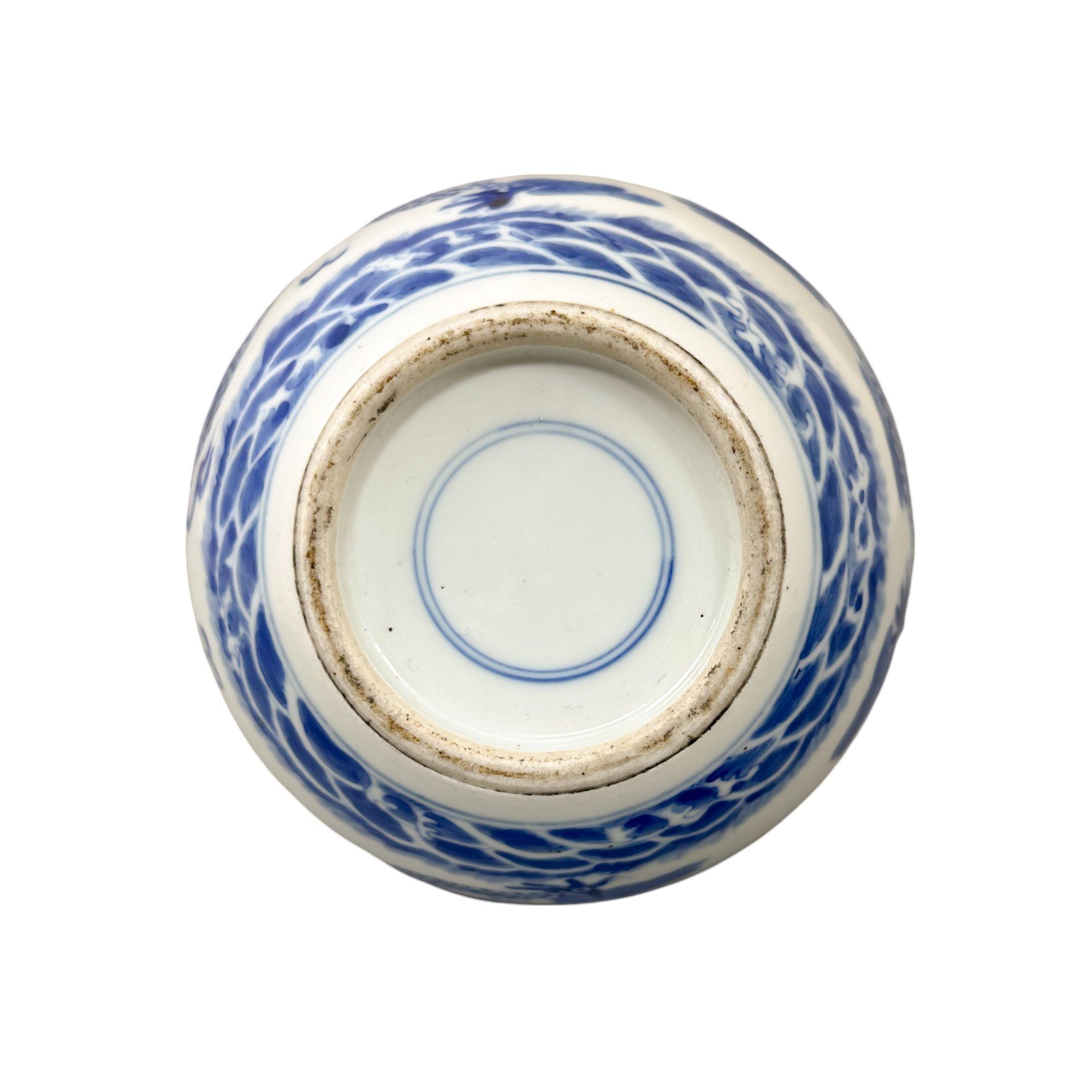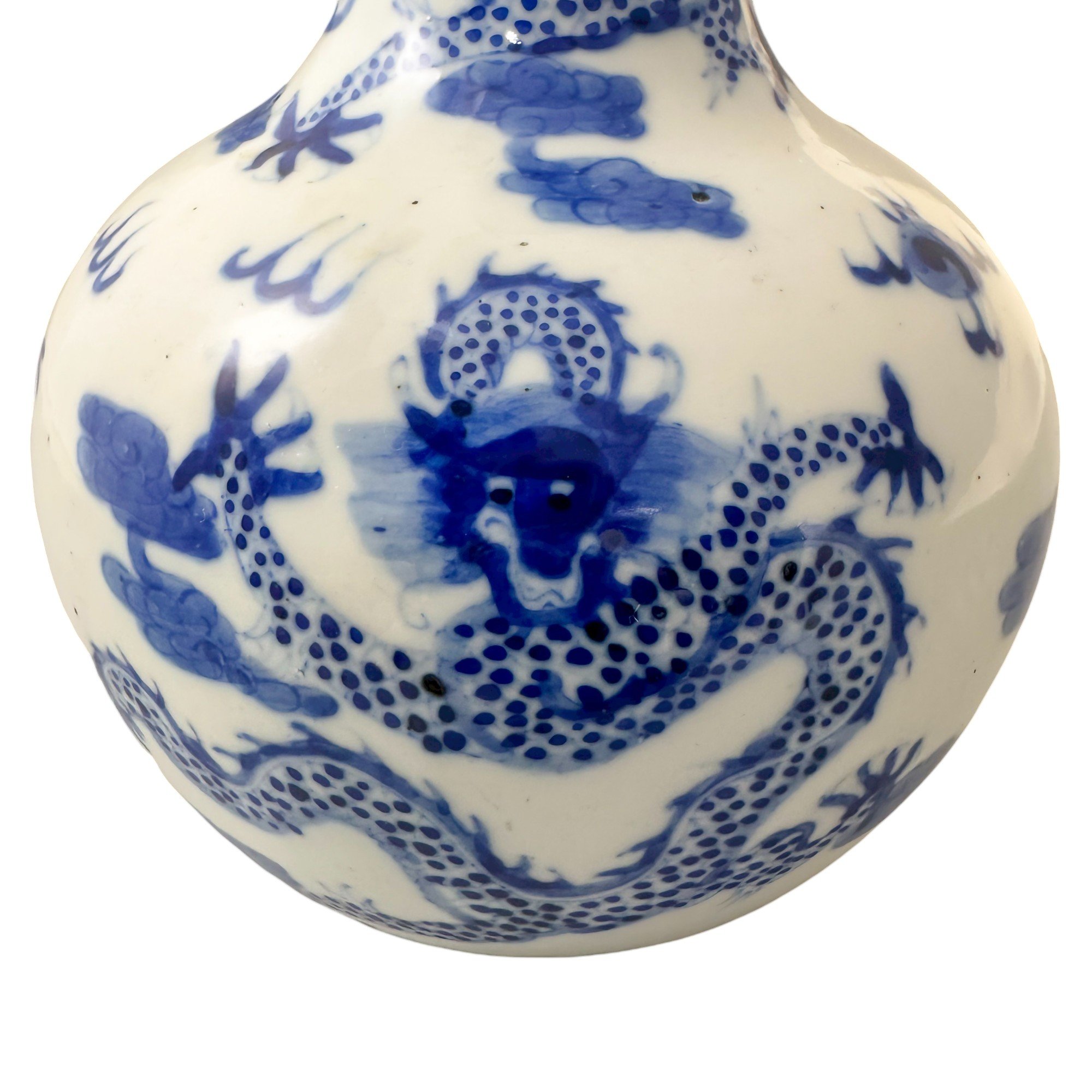 Image 1 of 7
Image 1 of 7

 Image 2 of 7
Image 2 of 7

 Image 3 of 7
Image 3 of 7

 Image 4 of 7
Image 4 of 7

 Image 5 of 7
Image 5 of 7

 Image 6 of 7
Image 6 of 7

 Image 7 of 7
Image 7 of 7








19th century Chinese tea dust glaze vase with long neck and bulbous belly
Late 19th century Chinese teadust glazed porcelain bottle vase. With a tall neck and globular body raised on a short foot and covered in a yellowish-brown glaze.
An olive colored glaze, high-fired green speckled glaze. A 'tea dust' glaze first occurred at kilns in Shaanxi and Henan during the Tang dynasty. Teadust glazes were used on a multitude of pottery even in the Ming dynasty and on provincial wares during the Qing as well. In the Yongzheng period during the Qing dynasty 'tea dust' glaze was revived and developed in Jingdezhen for use on Imperial wares, probably in an imitation of bronze.
It appears as if the tea dust effect results from an iron rich glaze being allowed to cool down slowly, which leads to iron - 'oil' - spots poling on the surface.
422 g
19 cm tall
3.3 cm top diameter
6 cm base diameter
9 cm at widest point
Very good antique condition.
Late 19th century Chinese teadust glazed porcelain bottle vase. With a tall neck and globular body raised on a short foot and covered in a yellowish-brown glaze.
An olive colored glaze, high-fired green speckled glaze. A 'tea dust' glaze first occurred at kilns in Shaanxi and Henan during the Tang dynasty. Teadust glazes were used on a multitude of pottery even in the Ming dynasty and on provincial wares during the Qing as well. In the Yongzheng period during the Qing dynasty 'tea dust' glaze was revived and developed in Jingdezhen for use on Imperial wares, probably in an imitation of bronze.
It appears as if the tea dust effect results from an iron rich glaze being allowed to cool down slowly, which leads to iron - 'oil' - spots poling on the surface.
422 g
19 cm tall
3.3 cm top diameter
6 cm base diameter
9 cm at widest point
Very good antique condition.
Late 19th century Chinese teadust glazed porcelain bottle vase. With a tall neck and globular body raised on a short foot and covered in a yellowish-brown glaze.
An olive colored glaze, high-fired green speckled glaze. A 'tea dust' glaze first occurred at kilns in Shaanxi and Henan during the Tang dynasty. Teadust glazes were used on a multitude of pottery even in the Ming dynasty and on provincial wares during the Qing as well. In the Yongzheng period during the Qing dynasty 'tea dust' glaze was revived and developed in Jingdezhen for use on Imperial wares, probably in an imitation of bronze.
It appears as if the tea dust effect results from an iron rich glaze being allowed to cool down slowly, which leads to iron - 'oil' - spots poling on the surface.
422 g
19 cm tall
3.3 cm top diameter
6 cm base diameter
9 cm at widest point
Very good antique condition.




































